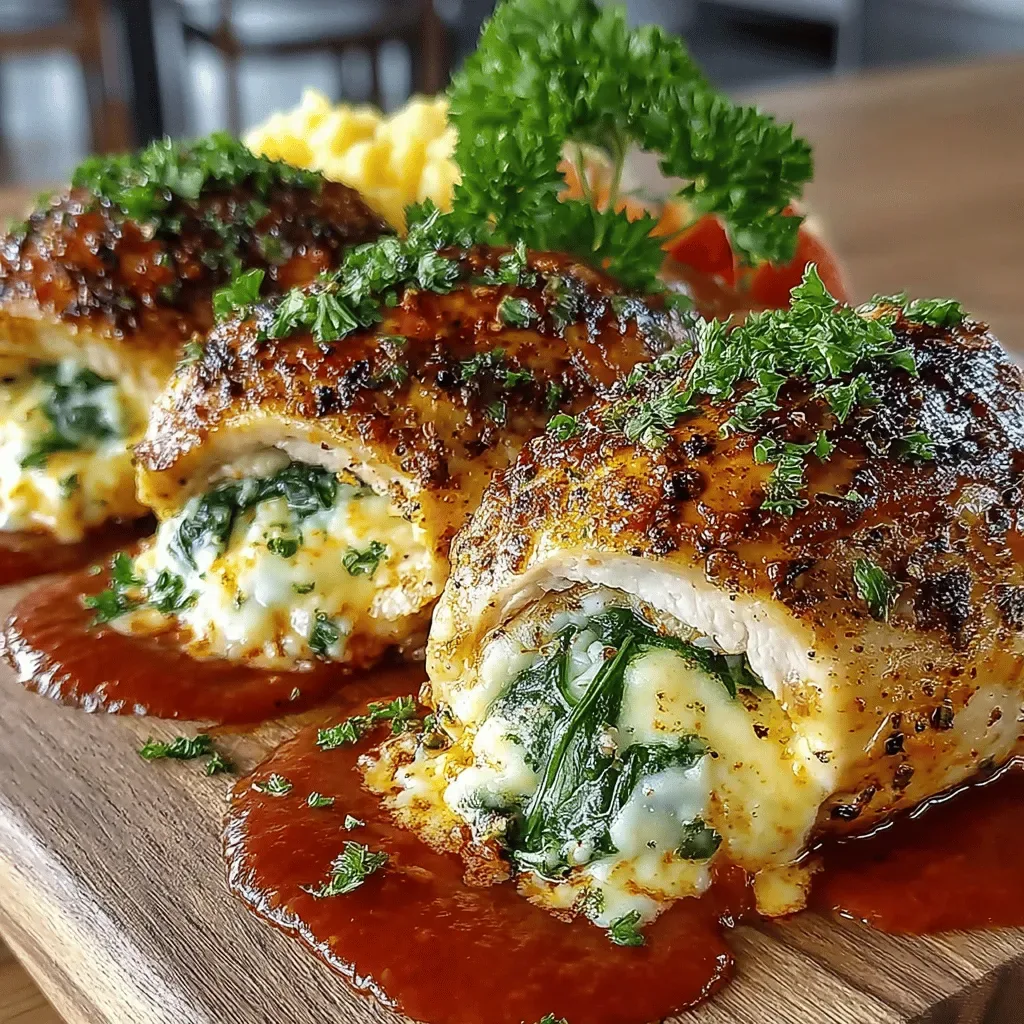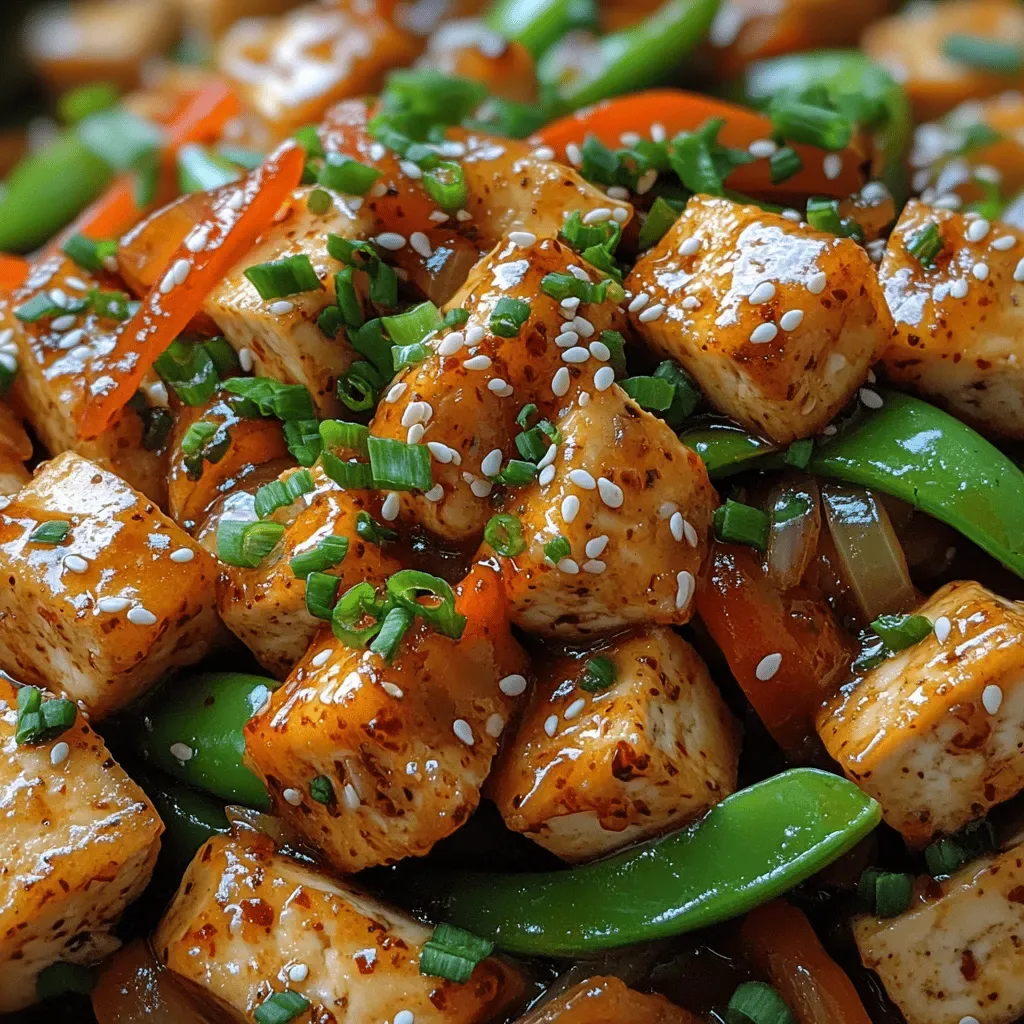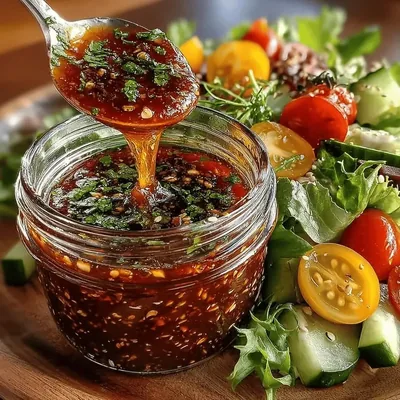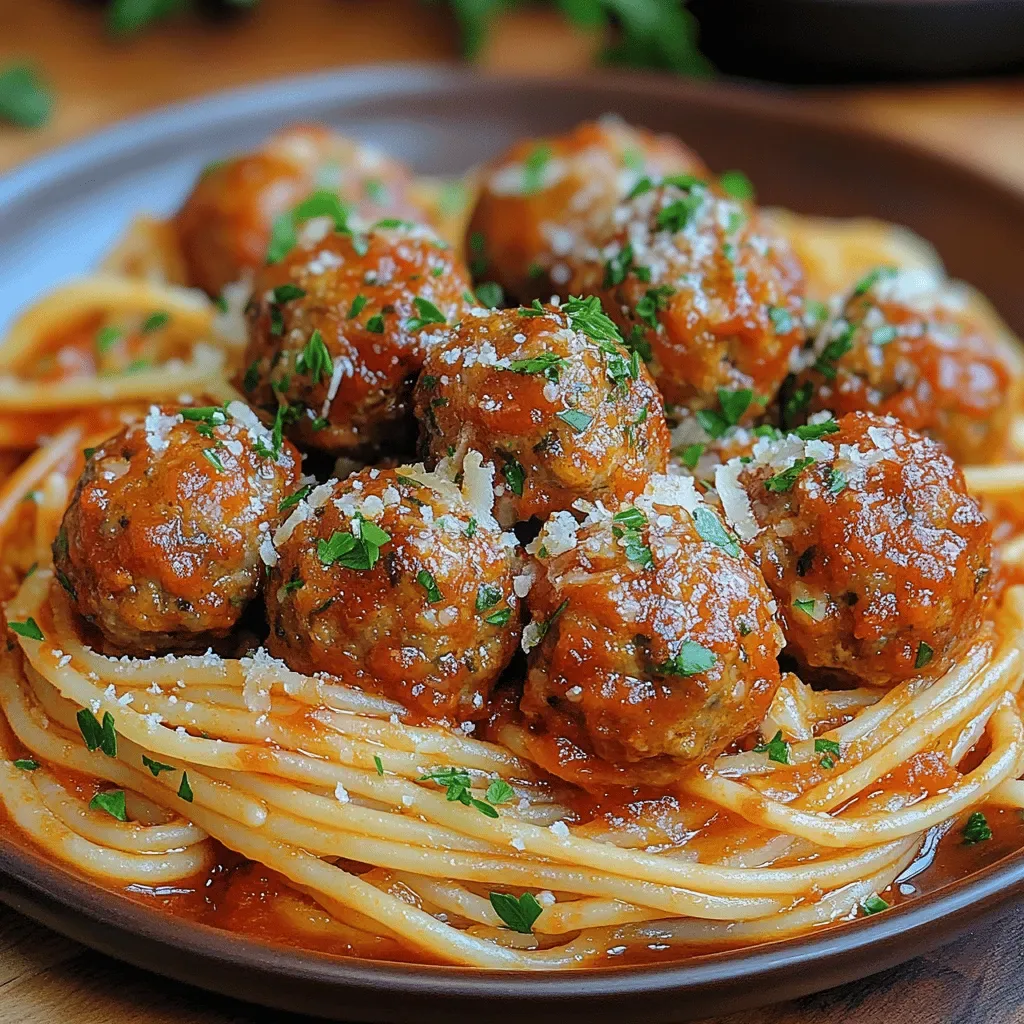Imagine a tender chicken breast rolled around a cloud‑light ricotta filling, speckled with fresh herbs, then baked to a golden finish. That’s the magic of Herbed Ricotta Stuffed Chicken Rolls, a dish that feels both elegant and comforting in one bite.
What makes it special is the contrast between the juicy, mildly seasoned chicken and the creamy, herb‑infused ricotta center. A light lemon‑garlic sauce ties everything together, delivering a burst of brightness without overwhelming the delicate flavors.
This recipe is perfect for busy weeknights when you want a restaurant‑quality meal, as well as for special occasions like birthdays or casual brunches with friends. Kids love the mild taste, while adults appreciate the sophisticated herb profile.
The process is straightforward: butterfly and flatten the chicken, spread the ricotta mixture, roll, sear, and finish in the oven with a quick sauce. In just under an hour you’ll have a beautiful, aromatic main that looks as good as it tastes.
Why You'll Love This Recipe
Bright Herb Flavors: Fresh basil, parsley, and thyme lift the ricotta, creating a fragrant, garden‑fresh core that shines with every bite.
Simple Technique: The rolling method may look fancy, but it’s easy to master and requires only a few kitchen tools.
Versatile Presentation: Slice the rolls to reveal the creamy center for an impressive platter, or serve whole for a rustic family style.
Balanced Nutrition: Lean protein, low‑fat dairy, and herbs deliver a satisfying meal without excess calories.
Ingredients
The success of this dish hinges on a handful of high‑quality ingredients. Fresh chicken breasts provide a neutral canvas, while the ricotta filling adds richness without heaviness. A blend of aromatic herbs brightens the palate, and a simple lemon‑garlic sauce delivers a glossy finish that keeps the rolls moist.
Main Ingredients
- 4 boneless, skinless chicken breasts
- 2 teaspoons olive oil (for searing)
Ricotta Filling
- 1 cup whole‑milk ricotta cheese
- 1/4 cup grated Parmesan cheese
Herb Mixture
- 2 tablespoons fresh basil, finely chopped
- 2 tablespoons fresh parsley, finely chopped
- 1 teaspoon fresh thyme leaves
Sauce & Seasonings
- 2 cloves garlic, minced
- 1/2 cup low‑sodium chicken broth
- 2 tablespoons fresh lemon juice
- 1 tablespoon butter
- Salt and freshly ground black pepper, to taste
These ingredients work together to create a dish that’s moist, aromatic, and visually striking. The ricotta stays creamy because it’s mixed with Parmesan and herbs, while the quick lemon‑garlic sauce adds a glossy finish that keeps the rolls tender during the final bake.
Step-by-Step Instructions
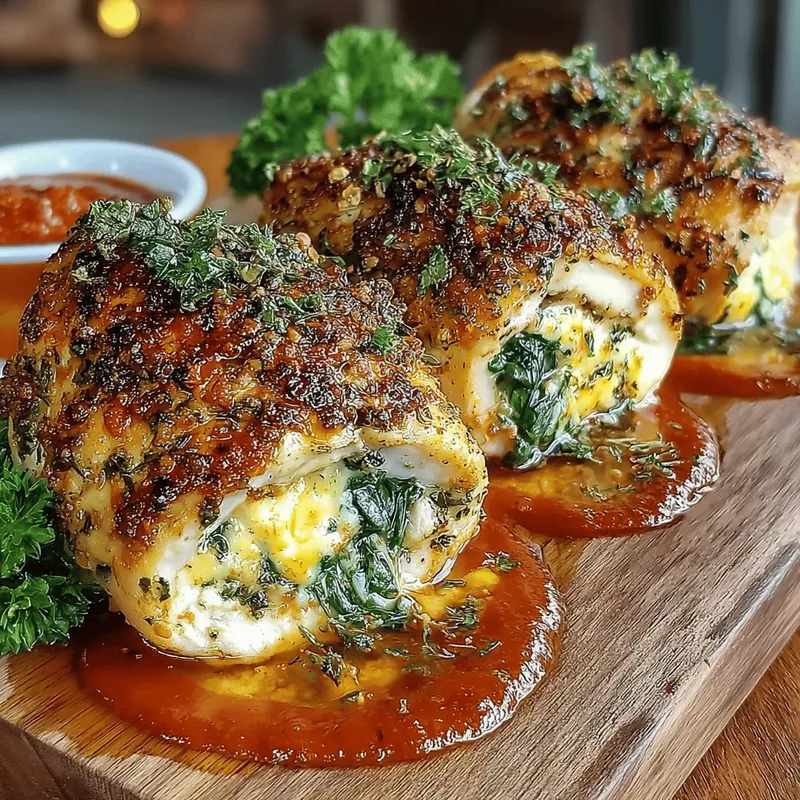
Preparing the Chicken
Place each chicken breast between two pieces of plastic wrap. Using a meat‑mallet or rolling pin, gently pound to an even thickness of about ½‑inch. This not only speeds up cooking but also creates a uniform surface for rolling. Lightly season both sides with salt and pepper, then set aside.
Making the Herbed Ricotta
In a medium bowl, combine 1 cup whole‑milk ricotta cheese, 1/4 cup grated Parmesan, the chopped basil, parsley, and thyme. Stir until the mixture is smooth and the herbs are evenly distributed. Taste and add a pinch of salt if needed; the cheese already contributes some saltiness.
Assembling the Rolls
- Spread the filling. Lay a chicken breast flat, then spread about 2‑3 tablespoons of the ricotta mixture over the surface, leaving a ½‑inch border to prevent leakage.
- Roll tightly. Starting from the long side, roll the breast tightly into a log. Secure the seam with a toothpick or kitchen twine; this keeps the roll intact during searing.
- Sear the rolls. Heat 2 teaspoons olive oil in a large oven‑safe skillet over medium‑high heat. Add the rolls, seam side down, and sear for 3‑4 minutes per side until a deep golden crust forms. The sear locks in juices and adds flavor.
- Prepare the sauce. Reduce heat to medium. Add the minced garlic and sauté for 30 seconds until fragrant. Deglaze the pan with 1/2 cup chicken broth and 2 tablespoons lemon juice, scraping up browned bits. Let the liquid reduce by half, then whisk in 1 tablespoon butter for shine.
- Finish in the oven. Transfer the skillet to a preheated 375°F (190°C) oven. Bake for 12‑15 minutes, or until the internal temperature of the chicken reaches 165°F (74°C). Baste the rolls once halfway through with the pan sauce.
Plating & Serving
Remove the rolls from the oven and let them rest for 5 minutes—this redistributes the juices and prevents a dry cut. Slice each roll diagonally into ½‑inch medallions, arrange on a serving platter, and drizzle with any remaining sauce. Garnish with a sprinkle of fresh parsley or basil for color.
Tips & Tricks
Perfecting the Recipe
Even thickness. Pounding the chicken to a uniform ½‑inch thickness ensures the rolls cook evenly and prevents a raw center.
Seal the seam. Use toothpicks or kitchen twine; a tight seal stops the filling from escaping during searing.
Rest before slicing. A 5‑minute rest allows juices to settle, giving each slice a moist interior.
Flavor Enhancements
Add a teaspoon of zest from the lemon used in the sauce for extra brightness, or stir in a pinch of red‑pepper flakes for subtle heat. A drizzle of high‑quality extra‑virgin olive oil just before serving adds a silky finish.
Common Mistakes to Avoid
Do not overfill the rolls; excess filling can burst the seam. Also, avoid moving the rolls while they are searing—letting them sit creates the essential caramelized crust.
Pro Tips
Use a meat thermometer. Checking for 165°F guarantees safety without overcooking.
Pre‑heat the skillet. A hot pan creates an instant sear, locking in moisture.
Finish with butter. Swirling cold butter into the sauce at the end adds a glossy, velvety texture.
Variations
Ingredient Swaps
Replace chicken with turkey cutlets for a leaner option, or use pork tenderloin for a richer flavor. Swap ricotta for goat cheese or mascarpone for a tangier or creamier profile. Fresh herbs can be varied—try oregano and sage for an Italian twist.
Dietary Adjustments
For a gluten‑free version, ensure the broth is certified gluten‑free. To make it dairy‑free, substitute ricotta with a well‑drained silken tofu blended with nutritional yeast, and use olive oil instead of butter in the sauce. Keto diners can replace the honey‑sweetened glaze with a sugar‑free sweetener.
Serving Suggestions
Pair the rolls with buttery herb rice, creamy polenta, or a simple quinoa pilaf. Roasted asparagus, sautéed green beans, or a crisp arugula salad with lemon vinaigrette add color and balance the richness of the dish.
Storage Info
Leftover Storage
Allow leftovers to cool to room temperature, then transfer the sliced rolls and any remaining sauce to an airtight container. Store in the refrigerator for up to 3 days. For longer keeping, freeze in a freezer‑safe bag or container for up to 2 months; wrap tightly to avoid freezer burn.
Reheating Instructions
Reheat refrigerated leftovers in a 350°F oven, covered with foil, for 12‑15 minutes until warmed through. For frozen portions, thaw overnight in the fridge, then follow the same oven method. A quick microwave on medium power (30‑45 seconds) works in a pinch, but add a splash of broth to keep the meat moist.
Frequently Asked Questions
This Herbed Ricotta Stuffed Chicken Rolls recipe delivers a restaurant‑level experience with approachable steps, flexible variations, and handy storage tips. By following the detailed instructions and incorporating the pro tips, you’ll achieve juicy, aromatic rolls every time. Feel free to experiment with herbs, sauces, or side dishes to make it truly your own. Enjoy the burst of flavor and the pride of creating a stunning, comforting meal for any occasion!

